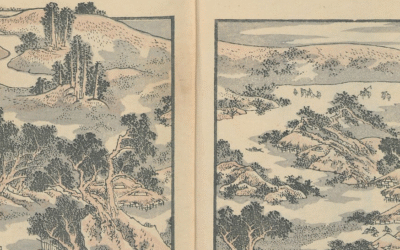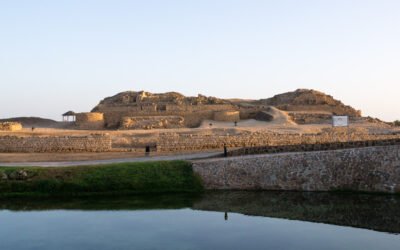Bait Al-Dhahir is in the heart of Bowsher, it is an architectural masterpiece that carries a historical memory related to the Omani heritage and politics. It has been preserved for over a century; the exact date for the construction of the house is not recorded. However, it is widely known that it was built somewhere in between 1913 to 1920 or perhaps a bit later. The house was built by Shaik Ali bin Abdullah AL Khalili, who moved to Bowsher from Samail along with his father Shaik Abdullah bin Said AL Khalili.
In 1913 the Imamate power (Imam Salim bin Rashid AL Kharusi) had besieged Samail. Shaik Abdullah bin Said AL Khalili found it appropriate to mediate between Sayyid Nader bin Faisal (who is the son of the Sultan and was his Wali in Samail) and the Imamate; Shaik Abdullah approached both the Imamate and Sayyid Nader and suggested one month in which Sayyid Nader will return to his father for further consultation in Muscat. During this period, the fort of Samail will remain in the custody of Shaik Abdullah’s other son Shaik Mohammed bin Abdullah AL Khalili; (later became the Imam of Oman after the death of Imam Salim)
Both sides accepted the proposal by Shaikh Abdullah; however, Sayyid Nader’s condition was that he shall be accompanied by Shaik Abdullah bin Said AL Khalili.
When they arrived Muscat and before the expiration of the month, news came that the Imamate forces has taken over the fort of Samail. Hence the decision by Shaik Abdullah not to return to Samail.
Sultan Faisal, the father of Sayyid Nader died in 1913 and was succeeded by his son Sultan Taimur bin Faisal. In 1914 Shaik Abdullah bin Said AL Khalili also died and left behind him in Muscat his son Shaikh Ali bin Abdullah AL Khalili. Sultan Taimur decided to establish the Wilayat of Wadi Bowsher and appointed Sheikh Ali bin Abdullah AL Khalili to be the Wali (governor) of the Wilayat of Wadi Bowsher. Sheikh Ali decided to build his house Bait Al-Dhahir at the forefront of the town Bowsher.
Bait Al-Dhahir was the family house, and the Wali office at the same time. It contains the (Barzeh), the Council where the Wali and judges meet along with the public. The Architecture of the house consists of 4 floors ground floor, first, second with one room and a top floor also with one room. Both ground and first floors have bedrooms as well as a place for family gathering (Sitting room or living room). The house has within its compound its water supply flowing from the mountains of Bowsher and gathered in 2 pools. The pools are usually used for irrigation and bathing, one of the pools is covered and only used by ladies, it has the ladies prayer area, the other one is an open one, used men; in addition to the mountains water supply, the house has its water well, the house had horse stables, animal shelters and is surrounded by farms with various fruits, vegetables and of course various types of palm trees. Two special feature that stands out in this house besides its fortress-like structure; the main door at the entrance of the house which is a gift from Sultan Taimur to Shaikh Ali bin Abdullah, the door has a Qur’anic verse on the crown as well as the date of the manufacturing/or writing of the verse (which was in Jumada Althani-1115 Hijri, corresponding to October-1703 AD), the second feature is the Sultan Room which was the room selected to be the accommodation for both Sultans who visited the house ( Sultan Taimur bin Faisal and Sultan Said bin Taimur).
Shaik Ali bin Abdullah AL Khalili remained the Wali of Bowsher until his death, after his death; his son Shaik Hilal bin Ali became the Wali of Bowsher until the beginning of the new renaissance led by his Majesty Sultan Qaboos in 1970. Shaik Hilal was appointed as the ambassador of the Sultanate to Saudi Arabia by his Majesty Sultan Qaboos in the same year.
In the year 1973, and due to the lack of some modern life necessities such as, electricity, health care, education in Bowsher itself; Shaik Hilal decided to move closer to these amenities which at that time were available in Ghobrah. Bowsher and Ghobrah are few kilometers apart; however, the road from Ghobrah to Bowsher was like driving through the desert and one will have to navigate through the dunes to reach Bowsher. A trip from Ghobrah to Bowsher or the other way around could easily take between 30 to 40 minutes possibly more depending on the vehicle and condition of the road.
Bait Al-Dhahir remained unoccupied for almost the next 40 years. All these years took their toll on the house, erosion due to rain, wind, and other unexpected human interventions, etc., the house was severely damaged, and in some places, full walls and roofs fell and disappeared.
It was difficult for the family to see the house which had a very emotional connection and a significant history ends up in such a state. Many ideas were floated around by various family members until a conscious carefully studied decision was taken to restore and renovate the house.
In 2012 the family decided to restore and renovate the house, a specialist contractor was approached to assess the damage and what could be done and bring the house back to life again, the restoration took almost 4 years utilizing everything that can be utilized from the old house and where ever it was not possible to do so it was brought back to life to as close as possible to its original state. The house maintained its original shape, dimensions, and area. The work was completed in 2015. The house is back to life after 40 years of slow deterioration. Despite the restoration and repairs, it still looks very traditional as the traditional aspects have not been eliminated, the decoration, cultural touches, and the whole building still looks the same.
I'm Hassan — a multidisciplinary storyteller at the intersection of culture, creativity, and strategy. As a content creator and website manager at Omanspire, I bring Omani stories to life through thoughtful writing, SEO-driven publishing, and engaging digital experiences. With a passion for history, branding, and visual design, I craft content that bridges tradition and innovation — always with purpose, and always with people in mind.




